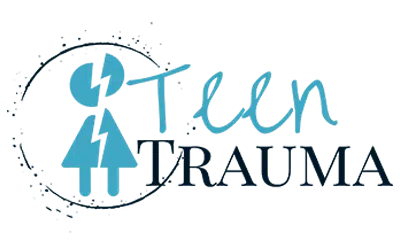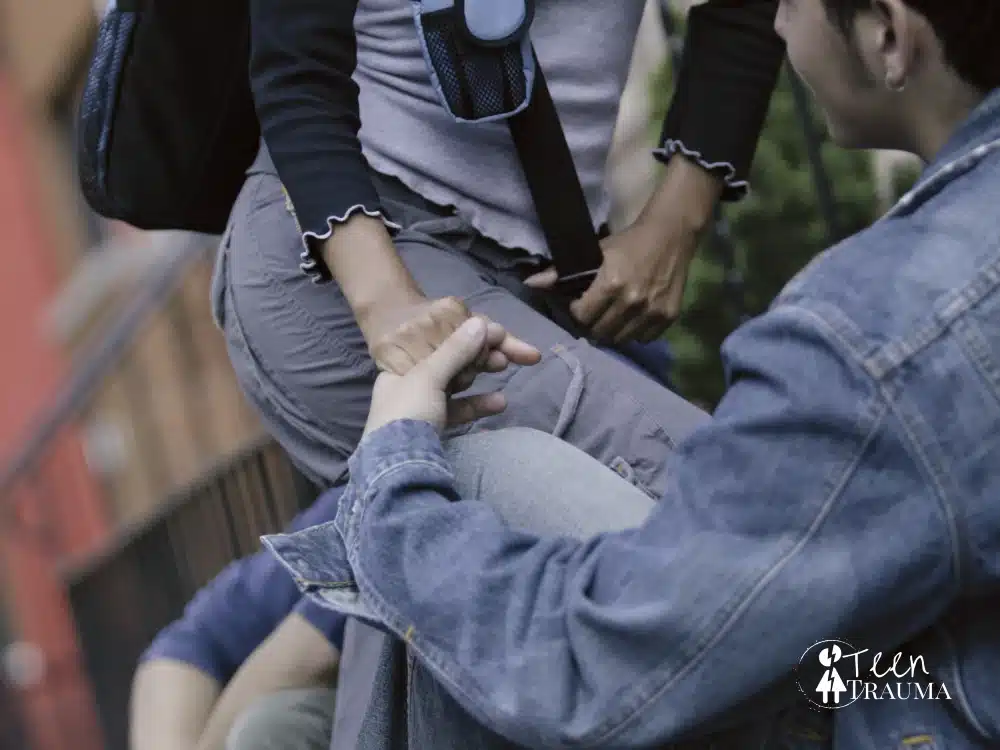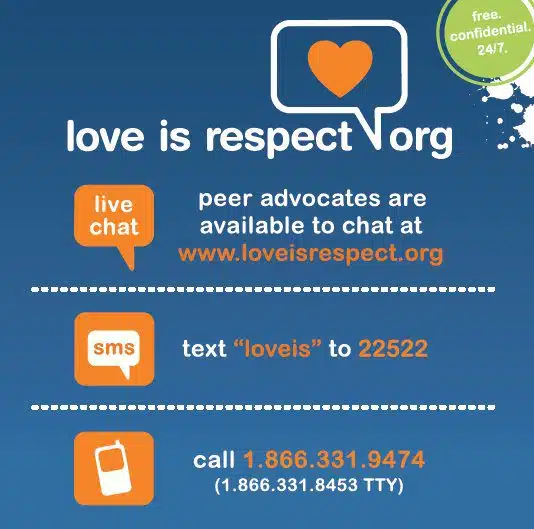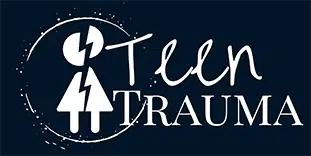Is it Trauma Bonding? Signs, Symptoms and Healing
If your teenager is stuck in an abusive relationship, whether with a romantic interest, a close friend or even a parent, they may find themselves in the midst of a trauma bond. Trauma bonds are common in abuse situations.
They can be a way that emotional abusers can keep their abuse victims in their grip, even after the abuse is identified and discovered. Sadly, the cycles of abuse are very hard to break, but it does start with identifying both abuse and the trauma bond that can occur.
What Is Trauma Bonding?
Trauma bonds are an attachment that grows between an abusive individual and their victim. The abuser will use psychological and emotional manipulation to make their victim dependent on them for important emotional connections.
This bond makes it feel impossible for the victim to leave, even if they’re clearly aware of the abuse. They find that they fear for their safety, even if it’s simply emotional safety, and cannot leave as a result. They also become emotionally entangled with the abuser and leaving feels impossible.
“This attachment is not what someone on the outside would expect, and is often looked at by outsiders as an allegiance to one’s abuser,”
Katie Moore, Psy.D.
Trauma bonding is particularly difficult for teens and children because they often lack the power to get away from abuse, especially if the abuser is an authority figure. For this reason, parents wanting to help their young people need to understand trauma bonding.
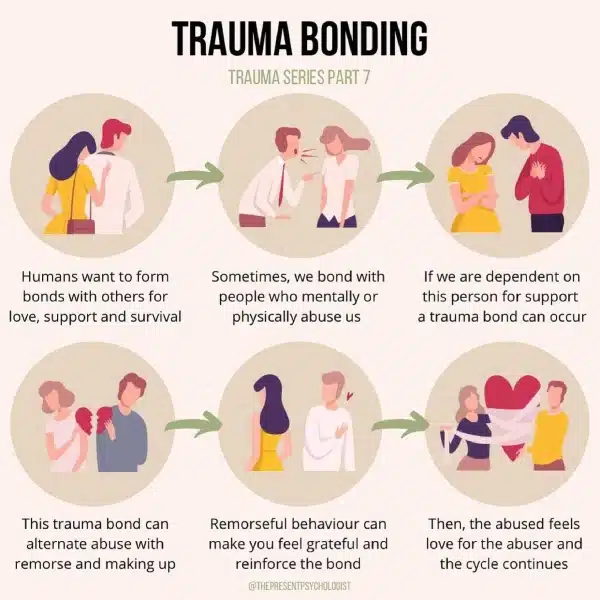
Trauma Bonding Signs
How can you tell if someone you care about is caught up in a trauma bond? This can be tricky because people will normally say nice things or defend the people they love. Yet with a trauma bond, that defensive nature or kind nature comes at the expense of the victim’s well-being. Some signs to watch for include:
- Justifying negative or abusive behavior, such as saying they are yelling because of stress
- Covering up negative behaviors of the abusive person
- Experiencing paralyzing confusion while enduring ongoing abuse (Putting up with obvious abuse)
- Offering trust and goodwill when the other person’s behavior does not demand it
- Facing the inability to leave the relationship even when there are obvious reasons to do so
- Changing thinking or opinions to match the thoughts and opinions of the abuser
- Creating distance between themselves and other loved ones, including friends and family, especially if those individuals question the bond
In addition, the abuser can show signs of trying to create a trauma bond. These may include:
- Love bombing – Over-the-top signs of affection
- Guilt tripping – Putting the victim on a guilt trip for seemingly normal behavior
- Manipulation – Gaslighting and other forms of manipulation are common with these types of abuse
- Criticizing – Highly critical responses to the victim’s behavior
- Possessiveness – Being highly possessive of the victim’s time and attention, especially through intense jealousy
Types of Trauma Bonding Relationships
For someone to form a trauma bond, they usually have to go through periods of intense love and excitement followed by abuse. Neglect can also create a traumatic bond. The cycle of abuse and then loving behavior causes the victim to keep staying with the abuser and seeking the reward of the love and excitement part of the cycle.
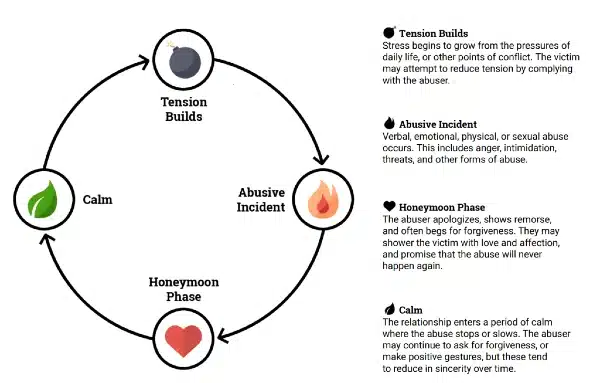
Often people will feel a deeper bond with the abuser than the people in their lives who treat them with love and respect because of this cycle and the mental effects of the abuse.
A trauma bond is always going to have an abuser and a victim. Sometimes the abuser is an aggressor, but sometimes it is someone who uses emotional abuse tactics. Either way, the resulting effect on the victim is the same.
Some common types of abusive relationships that affect teenagers include these examples of trauma bonding:
Sexual Abuse Relationships
When a child is sexually abused, they experience that intense feeling of love and excitement. The attention given to them by the abuser can be something they enjoy, even though the sexual abuse is quite damaging. This can create cycles of abuse that are hard for the child to break. They get caught up trying to please their abuser, and a trauma bond develops.
Human Trafficking
Human trafficking often results in trauma bonds. When the trafficking victim becomes entirely dependent on their abusers for even the most basic necessities, they can feel as though they owe that person something.
They may also feel that they have the inability to escape. Many trafficking victims view their handlers as “boyfriends,” and they are left craving the attention of their abusers, leading to a trauma bond.
Learn more about human trafficking and the sexual exploitation of teens in the U.S.
Toxic Relationships
Not all trauma bonds involve sexual contact. Sometimes a toxic relationship with a friend or family member can lead to a traumatic bond. When there is love combined with neglect, the child is left craving the positive attention and creating that bond that keeps them coming back in hope of more.
Emotional Abuse
Emotional abuse, which includes manipulation, anger, silent treatment, name-calling, and much more, can create a trauma bond. Again, the victim of this type of abuse is desperate for love and acceptance. When the emotional abuser gives a crumb of that, the victim desperately wants more, and will often go to any length to try to get more of those crumbs, and the bond intensifies.
Incest Relationships
Trauma bonding is nearly inevitable when sexual abuse comes from a close family member. The traumatic bond created by this type of abusive behavior is very difficult to break because the abuser is someone who should have a loving and protective role in the life of the victim.
Many children find themselves quite confused in these situations because of the effect of the emotional attachment they naturally have with a close family member combined with the abuse.
Understanding the Insidious Cycle and Dynamics of Trauma Bonding
Abuse often starts subtly, gradually eroding a victim’s sense of self and trapping them in a cycle of manipulation and control. Trauma bonds form insidiously, as the abuser alternates between cruelty and crumbs of affection, leaving the victim desperately seeking those fleeting moments of affection.
This pattern of abuse becomes deeply ingrained, making it exceedingly difficult for the victim to recognize the situation for what it is and find the strength to escape. It’s crucial to understand the insidious nature of abuse in order to empathize with victims and support them to break free from these harmful, deeply entrenched dynamics.
With awareness, compassion and the right support, we can help survivors reclaim their autonomy and heal from the profound impacts of trauma bonding. Victims of trauma bonding possess incredible strength, and with support, and therapeutic interventions, survivors can break free from trauma bonds, start a journey of healing and they can rebuild their lives.
The Abuser’s Tactics: Manipulation, Control, and Breaking Down Self-Worth
Abusers seek to isolate the victim from friends and family, making them dependent on the abuser. Victims are then bombarded with cycles of abuse followed by remorse and “love,” leading them to believe the abuser can change.
Abusers seek victims of past trauma past trauma or individuals who have low self-esteem, making them more susceptible to the abuser’s gaslighting tactics and emotional abuse. The abuser may convince the victim that they are the problem, or that they are unlovable outside of the relationship. This erodes the victim’s confidence and sense of self-worth, making it increasingly difficult to leave.
Ultimately, the abuser’s tactics work because they tap into the victim’s deepest fears and insecurities. Breaking free from this cycle of abuse requires immense courage and support. It is crucial for friends and families to understand the complex dynamics of trauma bonding and offer compassionate resources to help victims regain their power and safety.
What Does Trauma Bonding Do to a Victim?
Trauma bonding may seem fairly innocent at first, but the reality is that it has a severe impact on the victim. In fact, current research indicates abuse can cause biological changes and brain changes that lead to post-traumatic stress disorder, or PTSD.
This disorder is treatable, but it requires professional therapy and intervention to rebalance the brain chemistry and function.
Other problems that people experiencing trauma bond can have include:
- The development of chronic illness
- Panic attacks and other displays of emotional stress
- Fatigue and brain fog
- Flashbacks of trauma events
- Fear that the abuse will continue
- Sleep concerns
- Avoidance and isolation
- Hormone changes
- Decrease in brain function
These are serious concerns which are why treating trauma bonding and helping the individual get freedom from these bonds is so important.
How to Break a Trauma Bond?
If you identify a traumatic bond developing between your child and someone else, you need to get the right help to break the bond. It’s not as simple as cutting off the relationship. Abusive relationships and the damage they cause don’t simply stop.
Step 1: Recognize Abusive Behavior
In order to break a trauma bond, you must recognize and label abusive behavior. This can be hard when a victim feels bonded to a person. If you suspect abuse or have clearly identified it, the first place to go for help is the National Domestic Violence Hotline. This free resource will advise you on the next steps to take to get your child to a safe place.
Step 2: Distance yourself from the abuser
This may mean physical separation or just limiting contact. If you must see the abuser regularly, keep communication to a minimum and set boundaries with your abuser. This may involve physical, emotional, or mental limits. If possible, have someone else present when you do see them.
Step 3: Get Professional Help
Next, you need to seek professional help, but the right therapist is key to this. A victim needs a trauma-informed therapy program and therapist to deal with the complex PTSD that comes from this type of abuse and a trauma bond.
With trauma therapy, your child can move past the trauma bond and learn to live independently and free from their abuser. Keep in mind that choosing a therapist that isn’t trauma-informed could be retraumatizing, so choose a therapy program carefully.
Both cognitive behavioral therapy (CBT) and dialectical behavioral therapy (DBT) can treat trauma. Some patients also benefit from eye movement desensitization and reprocessing (EMDR) to treat the trauma and break the bond.
For teens with intense trauma and resulting trauma bonds, a residential treatment program can also help create space between them and the abuser while implementing many techniques.
Remember, abuse usually escalates, so you need to act when you first recognize it. If you see signs of a trauma bond, then it means that abuse is likely happening.
Call the National Domestic Violence Hotline to find resources near you, and take steps to get your child the help they need to break free from the trauma bond and its devastating effects.
